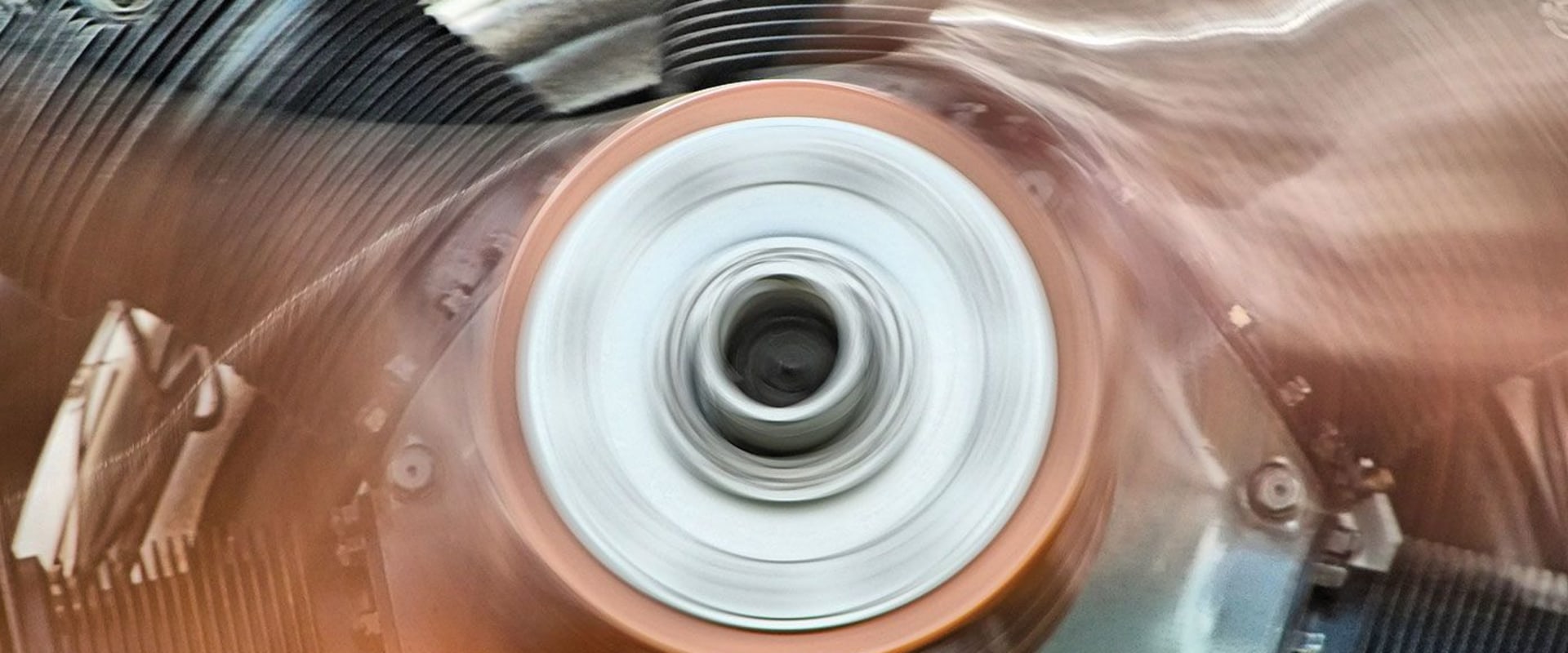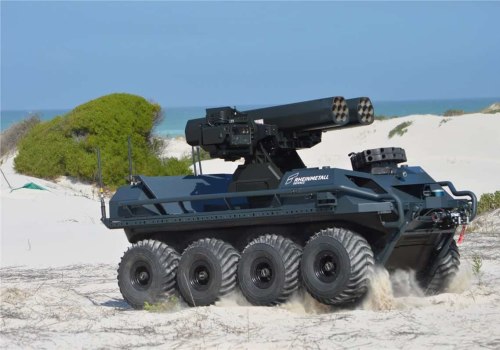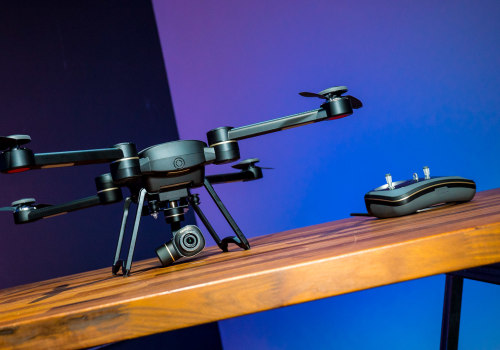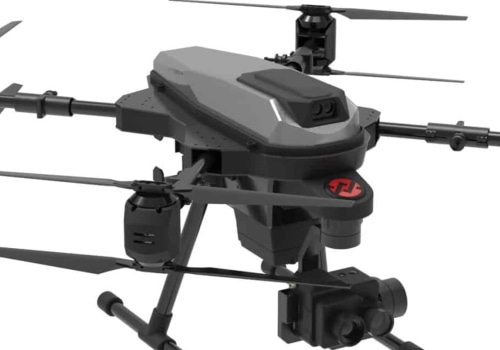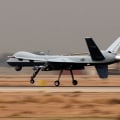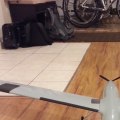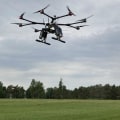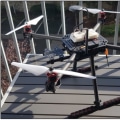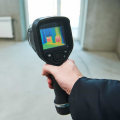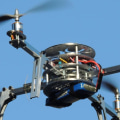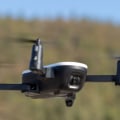Are you a pilot, or someone who is about to take their first flight? If so, it's important to understand the importance of checking the propeller/motor combination before each and every flight. This simple safety tip can save lives and make sure that your flight is as safe as possible. In this article, we'll explain why it is so important to check the propeller/motor combination before each and every flight, and provide some tips on how to do it. By following these safety tips, you can make sure that you have a safe and enjoyable flight. A propeller/motor combination is the combination of two components that allow an aircraft to move through the air.
The motor is responsible for powering the aircraft and providing thrust, while the propeller is a type of airfoil that converts the power from the motor into lift. The two components work together to create the necessary thrust and lift to keep the aircraft in the air.
Overview of a Propeller/Motor Combination
: Understanding how a propeller/motor combination works is essential for being able to identify any potential issues. The motor is the power source of the aircraft and provides thrust, while the propeller converts this power into lift. The two components work together to create the necessary thrust and lift to keep the aircraft in the air.The size, shape, and pitch of the propeller also affect its performance, as these factors will determine how much thrust and lift it generates.
Potential Problems
: There are a number of potential problems that can arise with a propeller/motor combination. Issues with either component can cause a decrease in performance or an increase in fuel consumption. Common problems include worn or damaged propellers, improper installation of components, incorrect motor settings, and incorrect propeller pitch. It is important to regularly inspect the propeller/motor combination to ensure that it is functioning properly.Pre-Flight Checklist
: Before every flight, it is important to inspect and check your propeller/motor combination for any potential issues.This should include a visual inspection of both components for any signs of damage or wear. The motor should also be tested to make sure it is working correctly, and the propeller should be adjusted to the correct pitch and speed. Additionally, it is important to verify that all connections are secure and that all components are properly installed.
Safety Tips
: While flying, there are certain safety tips that should always be followed. This includes not flying in bad weather conditions or over people and property.Additionally, it is important to stay within your skill level and to never fly without first conducting a thorough pre-flight inspection. Additionally, it is essential to always be aware of your surroundings and to know your limits.
Maintenance
: In order to ensure safe flights, regular maintenance and care should be taken when handling a propeller/motor combination. This includes regular cleaning and inspections of both components, as well as checking for signs of wear or damage. Additionally, it is important to replace any worn or damaged parts promptly and always follow manufacturer instructions when making any repairs or adjustments.Maintenance
Maintenance of a propeller/motor combination is essential to ensure a safe flight.Regular inspections and checks should be done to identify any potential issues before taking off. A few key items to check are the condition of the propeller, the connection between the motor and propeller, as well as the performance of the motor. When inspecting the propeller, look for any signs of wear or damage. If any is found, it may be necessary to replace the propeller.
Be sure to check the tightness of the nuts and bolts that hold the propeller in place, as these should not be loose. It is also important to check the connection between the motor and propeller. This should be done by inspecting the wiring, checking the torque on the mounting screws, and making sure that all connections are secure. Finally, it is important to check the performance of the motor.
This can be done by running tests on the motor to make sure it is in good working order. By following these steps and regularly checking your propeller/motor combination before flight, you can help ensure a safe and successful flight.
Potential Problems
When checking your propeller/motor combination for potential problems, it is important to understand the different components that make up the combination. The propeller is one of the most important components and is responsible for providing thrust and generating lift. It also helps to convert the energy from the motor into usable power.The motor is responsible for powering the propeller, and together they work to provide the necessary power for flight. When inspecting the propeller/motor combination, it is important to check for any signs of wear or damage. This includes checking for cracks, dents, or other signs of wear. Additionally, it is important to check the propeller's balance to ensure that it is spinning correctly.
It is also important to check the motor for any signs of corrosion or other damage. In addition to inspecting the propeller/motor combination, it is important to inspect all other components as well. This includes checking all electrical connections for any potential problems, as well as inspecting the fuel tank and fuel lines for any leaks or contamination. Finally, it is important to inspect the aircraft itself for any potential issues, such as cracks or damage to the fuselage.
By understanding the different components that make up a propeller/motor combination, being able to identify any potential problems, and taking the right steps to address them, you can ensure a safe flight.
Pre-Flight Checklist
A pre-flight checklist is an essential tool for any pilot to ensure a safe flight. Before taking off, it is important to inspect and check your propeller/motor combination for any potential issues. To do this, you should go through a comprehensive pre-flight checklist.The first step of the pre-flight checklist is to inspect the propeller for any signs of damage or wear. Make sure to look for bent or cracked blades, damage to the hub, and any other irregularities. Once you have examined the propeller, it is important to check the motor for any signs of damage or wear. Look for any corrosion, loose bolts, or other indicators that the motor may not be operating properly.
After inspecting the propeller/motor combination, you should also check the mounting hardware and make sure it is secure and in good condition. Make sure to tighten all bolts, nuts, and screws to ensure the motor and propeller are mounted properly. Finally, you should check the aircraft’s electrical system and make sure there are no loose wires or exposed connections that could cause a short circuit or other hazard during flight. It is also important to check the engine oil level and fuel tank before each flight. Make sure the oil level is correct and there is enough fuel in the tank to complete the intended flight.
Additionally, check the battery levels and make sure they are fully charged before takeoff. By going through a comprehensive pre-flight checklist and thoroughly inspecting your propeller/motor combination, you can ensure a safe flight.
Safety Tips
Before taking off, it is essential to perform a thorough inspection of the propeller/motor combination. This includes inspecting the propeller for any wear, damage, or potential issues, as well as making sure the motor is properly connected and functioning. Additionally, it is important to check the noise level and vibration of the propeller/motor combination while running, as this could indicate an issue. When performing a pre-flight inspection, make sure to check for any loose parts or connections. If there is anything that appears to be out of place or not working correctly, it is best to address it before taking off.Additionally, make sure to check the oil levels and other fluids regularly. When checking the propeller/motor combination, it is also important to look out for any signs of corrosion or other damage. If any parts appear to be damaged or worn out, they should be replaced as soon as possible. Additionally, make sure to check for any unusual noise or vibrations that could indicate an issue. Finally, always remember to take the necessary safety precautions when working with propellers and motors. Wear protective clothing, such as safety goggles and gloves, and be sure to follow all instructions provided by the manufacturer.
Safety Tips:
- Inspect and check your propeller/motor combination before flight
- Identify any potential problems
- Take the right steps to address them
- Check for loose parts or connections
- Check the oil levels and other fluids
- Look out for any signs of corrosion or other damage
- Replace any worn or damaged parts
- Be aware of unusual noise or vibrations
- Always take safety precautions when working with propellers/motors
Overview of a Propeller/Motor Combination
A propeller/motor combination is a crucial part of any aircraft.It is the power source that propels the plane forward and is composed of several different components. The components include the motor, propeller, drive shaft, and gearbox. The motor provides the power to spin the propeller, which then creates thrust for the aircraft. The drive shaft helps to transfer the power from the motor to the propeller.
Finally, the gearbox adjusts the speed of the engine to match the needs of the aircraft. It is important to check each component of the propeller/motor combination before taking off. This includes inspecting the motor for any potential problems, such as oil leaks or any signs of wear and tear. Additionally, you should check for any visible damage or cracks in the propeller blades. Finally, make sure the drive shaft and gearbox are properly lubricated and functioning correctly. By understanding the different components of a propeller/motor combination, being able to identify any potential problems, and taking the right steps to address them, you can ensure a safe flight.
Regular maintenance and inspections are also key to ensuring that your aircraft is in top condition. Following these steps will help keep you and your passengers safe during every flight. It is essential to check your propeller/motor combination before each flight, as it can help identify potential issues, and help prevent accidents. It is also important to conduct regular maintenance and inspections to ensure your aircraft is in peak condition. By taking the necessary steps, you can be sure that you and your passengers are safe during every flight.
